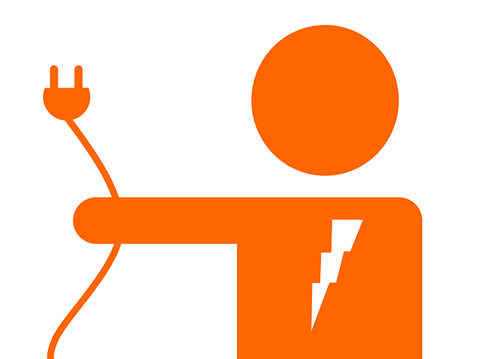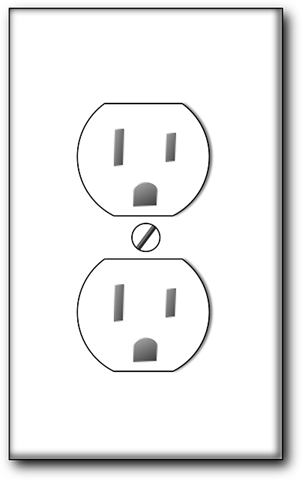Paying the utility bills in Norway can be exceptionally draining, particularly the electricity invoice. Most property owners want to know why the expense is so great, where the excessive power resources are coming from, or whether the electric supplier is charging too high for their services.

Many variables can contribute to higher-than-average electricity costs. When inquiries are often made, the best electricity suppliers will do a walk-through of the property to explain how much power is being used and where you can conserve.
Please see https://bestestrøm.no/hvor-mye-strøm-bruker/ for more details. Taking these measures will allow more significant energy savings and more efficiency with your usage moving forward.
As a good rule of thumb, it’s wise to have an electrical inspection roughly once a year primarily for safety purposes but also to ensure you implement the best energy practices.
Follow along to learn reasons electricity costs tend to range higher than average and offer suggestions for reducing these expenses.

What Contributes To Excessive Energy Costs
Many reasons can contribute to a higher-than-average utility bill, one that is consistently ranging on the expensive side of the scale. One variable will be the sort of home you have, its size and style, and the location, to put you in the average consumption rate.
Sometimes, you can reduce your price point by switching to a different electricity supplier. This supplier could have access to electricity for a lower rate and allow you to benefit from those savings. The contract terms could also be more favorable for your particular situation.
You might have seen increasing rates based on a variable-rate agreement, while a new supplier will provide you with a fixed-rate contract. That will mean the rate remains the same for the agreement’s life regardless of the supplier’s commitment.
The supplier is not necessarily the reason for elevated bills. The electricity consumption and when you use it can impact costs also. It’s wise to go step by step with the supplier to determine what could contribute to the expense.
Learn about electricity prices and what contributes to them at https://www.ssb.no/en/energi-og-industri/energi/statistikk/elektrisitetspriser/article-for-electricity-prices/record-high-electricity-price-in-2022–curbed-by-electricity-support-for-households. Let’s look at the top reasons.
Read Also:
Phantom Energy Is Drawn from Appliances and Devices
Many property owners are unaware that electronics and appliances that are plugged in will continue to draw energy even if they are not in use or are turned off. Electricity suppliers call this energy a “standby mode” or “phantom load.”
Most machines and devices manufactured today are designed to stay in standby mode instead of genuinely turning completely off when the user is not interacting with the item.
Depending on the number of appliances and devices in your home and whether these have been unplugged, roughly 10 percent can be added to the overall electricity use.
A priority when not using small appliances, especially, is to keep them unplugged. It might be inconvenient to continue to plug them in with each use, but it will ultimately save you in utility costs.
Inefficiency With Old Appliances Can Result in Greater Energy Use
Modern appliances are designed for greater energy efficiency compared to the models from the distant past. That means if you’re holding on to machines that are a decade old or more, the appliance is likely using an extreme level of electricity resulting in paying more in energy bills.
These appliances will include water heaters, freezers, clothes dryers and washers, refrigerators, ovens, dishwashers, and on. Primary excessive electricity consumption culprits are dryers and refrigerators. If these are exceptionally advanced in age, there will be minimal efficiency.
When considering the expense of buying new appliances with the savings you’ll see in utility costs over the long term, the investment is genuinely worth it. These can be considerable.
Are You Still Using Incandescent Light Bulbs to Light Your Household
You could be wasting an incredible amount of energy if you put traditional incandescent light bulbs in all your lighting fixtures and lamps. The options for optimum efficiency are countless, including compact fluorescent lamps, light-emitting diodes, and even halogen incandescent options.
An LED light bulb will use as much as 80 percent less energy than the conventional incandescent option, saving you loads on your next utility bill.
Regardless of whether you use the most energy-efficient bulb, leaving lights and the TV on when not in the same room wastes a ton of energy. It’s essential to teach kids from an early age to switch off anything they’re not using before leaving a room or heading out of the house.
Plus, in the daytime hours, it’s not necessary to have lights on in the home if the sun is shining its rays brilliantly into the house. These serve no purpose except wasting energy and creating an expense. Click here for details on electricity bills in Norway.

Adding Substantial Hardship to The HVAC Unit
The indication is that heating accounts for roughly 30 percent of the year’s utility expenses for an average single-family home, with cooling falling in at approximately 15 percent.
If the heating and cooling function with electricity, you’ll notice higher costs when there’s an added demand as it fluctuates seasonally. It’s wise to keep the temperatures in the summer and winter at a reasonable degree and not try to overcompensate for the extreme heat or cold.
While it might seem ineffective to keep the heat at a cool temperature in the winter, this is actually better not only for energy or utility costs but overall health and well-being. The suggestion is to dress warmer and keep additional bedding for sleeping.
Then in the summer, allow the temperature to be set at a warmer level. It’s not good to go from extreme heat into a frigid room. It’s better to be reasonable with the settings and allow a semblance of comfort but don’t overdo it.
Indulging In Hot Water
Heater water can account for as much as 20 percent of energy in the household. Common tasks like laundry, dishwashing, and showering will require much hot water. The more you use, the harder the water heater must work to generate another supply incorporating a lot of energy.
If the system is based on electricity, you will produce a high electric bill each time the hot water runs out after an extra-long shower, an extended dishwashing session, or huge loads of linens in the washer.
How Can You Reduce Your Usage and Cut Costs
You now have a general idea of the things that can spike your energy usage in the household, but how can you bring those costs back down to a more reasonable level? Some small measures will do the trick, but larger steps might be necessary to make a significant difference. Let’s look at a few.
An Energy Auditor Can Assess the Home
An energy auditor is the best resource to invite into the home to assess ways you can save energy costs by inspecting usage, including the devices and appliances in the house. At the conclusion, the auditor will make recommendations on conserving and the ideal way to realize overall savings.
In many situations, appliances and electronics are not unplugged when not in use. These are merely being turned off, leaving them in standby mode, meaning they’re still generating energy.
An excellent way to remember to cut the power is to have the electronics plugged into power strips so these can be switched off and then readily turned back on. When the phantom load is removed, a home can save as great as 10 percent from utility costs.
Final Thought
How you use your power is a primary consideration, along with the amount of power an item uses. Most appliances and devices are designed nowadays to be energy efficient.
However, suppose a homeowner is lackadaisical about switching off or unplugging devices and small appliances, so the energy resource is cut off when not in use. In that case, the costs will still accrue despite the efficiency level.
A priority is to reach out to the electricity supplier or the auditor within the electricity agency to have an inspection.
When assessing your home, the professional will find where the energy waste comes from and advise on the conservation measures needed for a reduced energy bill. Armed with these details, you can not only lower your costs but become less burdensome to your home’s energy capacity.










